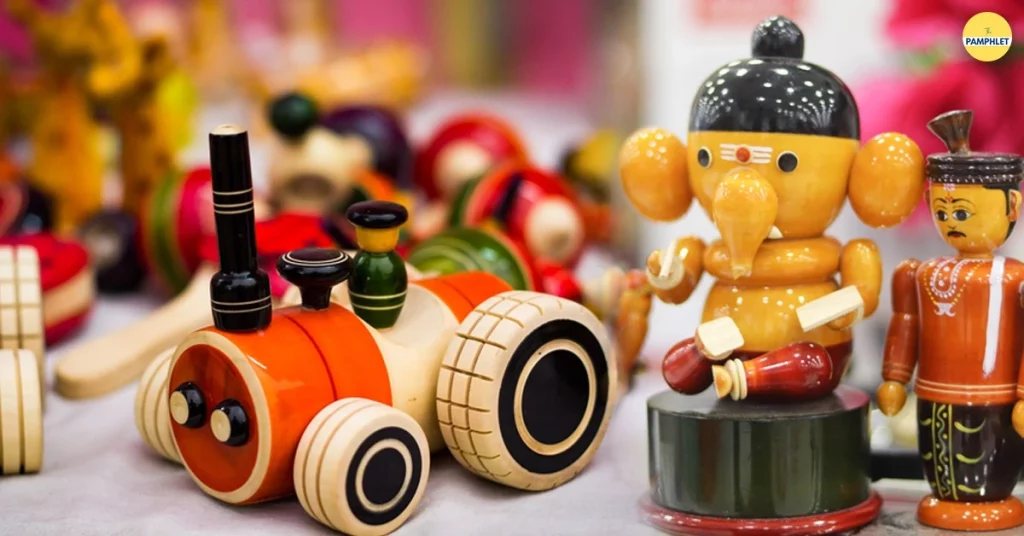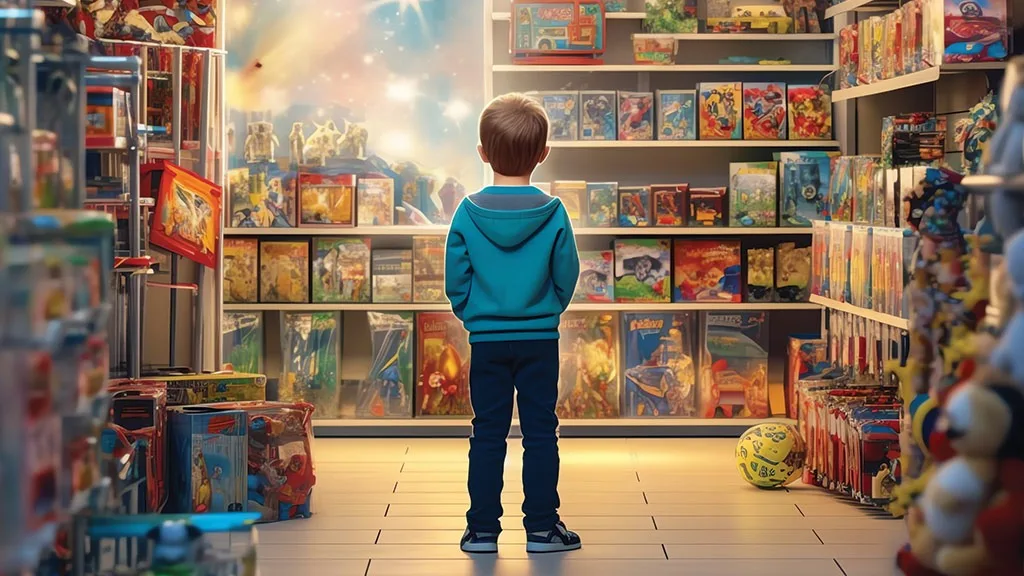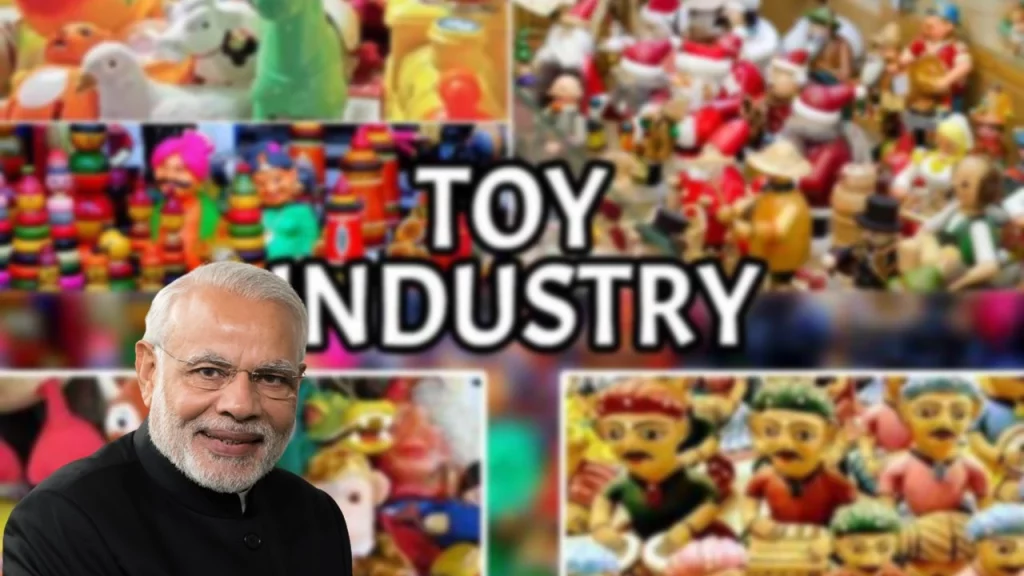The toy industry is one of the most reliant on plastic worldwide, utilizing approximately 40 tons of plastic for every million dollars in revenue. A study conducted by ecoBirdy reveals that about 90% of popular toys are made entirely from plastic, with polypropylene and polyethylene being the most common materials used.
The Indian toy industry is increasingly making its mark on the global stage, with a rise in high-value exports, particularly to countries in the Middle East and Africa.
In terms of regulatory changes, the import duty on toys in India was raised from 60% to 70% in the 2023 budget. This increase reflects the government’s efforts to regulate the toy market and possibly encourage local manufacturing.
As of 2023, the value of the Indian toy market was estimated at $1.7 billion. Looking ahead, market analysts from the IMARC Group forecast that this market will expand to $4.4 billion by 2032. This growth trajectory is expected to follow a CAGR of 10.6% during the period from 2024 to 2032, indicating a strong and steady expansion of the industry in India.
Table of Contents
The toy industry in India
Toys in India trace their origins back to the Indus Valley Civilization, around 8,000 years ago. The earliest toys included whistle-shaped parrots, long-armed monkeys for sliding down ropes or sticks, and miniature farm carts, all crafted from natural materials like bamboo, hay, clay, rocks, and fiber cloth.
Today, advancements in technology and manufacturing have led to the production of innovative toys. With the emerging trend of ‘Local se Vocal’, India is poised to become a global toy hub between 2025 and 2030. Particularly, labor-intensive toy categories such as dolls, soft toys, and board games show promising manufacturing prospects in India, thanks to cost competitiveness and increasing demand.
The Indian toy sector is primarily composed of small and medium-sized enterprises (SMEs). Over 4,000 toy units in the MSME sector contribute significantly to manufacturing and exports for both domestic and global brands. India’s potential leadership in this sector is backed by several factors:
- Raw Material Availability: India is the second-largest producer of polyester, crucial for plush toys, and has easy access to affordable plastics, paper boards, and textiles.
- State-Specific Incentives: Various states offer incentives, reducing manufacturing costs by nearly 30% for toy manufacturers.
- Large Cluster Ecosystem: The Government of India has established over 60 toy clusters, including a 400-acre cluster in Koppal, Karnataka, and a 100-acre facility in Uttar Pradesh, to boost the sector.
- Foreign Direct Investment (FDI): India permits 100% FDI in the toy sector through the automatic route.
- Free Trade Agreements: Recent agreements with regions like the UAE and the Middle East provide zero-duty access for Indian-made toys in these markets.
Challenges for the toy industry in India


India’s toy industry faces several significant challenges:
- Fragmentation and Lack of Resources: Dominated by small, local producers, the industry is 90% unorganized, with many units part of the MSME sector. These units often struggle with innovation and lack the resources for technological investment and production scaling. Furthermore, supply chains are highly fragmented.
- Impact of Import Duties and Quality Certification: The increase in import duties has led to order cancellations and holds, as customers wait for a potential reduction in duties. This has also resulted in higher toy prices. Additionally, quality certification requirements pose a challenge for traditional craftsmen, who often can’t afford these certifications, suggesting a need for government intervention or group certification options.
- Restrictive Labor Laws: Toy making is labor-intensive, and demand for specific toys can fluctuate rapidly. Indian labor laws do not support flexible staffing based on demand, particularly for larger organizations. This has led to the predominance of small units in the sector and limited the entry of major corporations.
- Dependency on Foreign Raw Materials: Indian toy manufacturers, especially those specializing in board games, soft toys, and puzzles, rely on imports from countries like South Korea and Japan for raw materials.
- Global Trade Challenges: Geopolitical uncertainties and protectionist policies in various countries, including the U.S., are impacting free trade. Such shifts could lead to higher import prices and reduced exports, adversely affecting the toy manufacturing market which relies on the free and cost-effective movement of goods internationally.
Indian Toys Market Trends
The toy market in India is flourishing, thanks to a growing population and increasing incomes. Enhanced awareness of how toys contribute to children’s cognitive development is boosting demand. There’s a trend towards advanced, electronic toys, with a special focus on sensory toys for children with special needs. Technological advancements are spurring innovation in toy manufacturing.
The market’s growth is further fueled by the expansion of organized retail channels and the booming e-commerce sector, which offers convenient home delivery and various payment options. The widespread use of digital devices like smartphones and laptops, along with the growing influence of social media, is also propelling the market forward.
In terms of market segmentation, toys are categorized by type, gender, and distribution channel. Infant and pre-school toys are particularly popular for their role in developing motor skills and hand-eye coordination. Unisex toys dominate the market, appealing to a wide range of children regardless of gender.
Toy Procurement hubs in India:


- Procurement hubs for toys in India are primarily concentrated in regions known for their manufacturing and trading capabilities in this industry. Some of the notable hubs include:
- Delhi and NCR Region: This area, including New Delhi and its surrounding regions, is known for a wide range of toy markets. It hosts numerous suppliers and wholesalers, offering a variety of toys from traditional to modern electronic ones.
- Mumbai, Maharashtra: Mumbai, being a major commercial city, has several markets and shops dedicated to toys. It’s known for both local manufacturing and import trading.
- Chennai, Tamil Nadu: Chennai has a significant market for toys, especially in areas like T. Nagar, which houses many retailers and wholesalers.
- Kolkata, West Bengal: Known for its traditional toy-making, especially in areas like Natungram, Kolkata also has markets that offer a diverse range of toys.
- Ahmedabad, Gujarat: Ahmedabad is another major city with a robust market for toys, known for both local creations and imported goods.
- Bengaluru, Karnataka: Bengaluru, being a major city, has various markets and malls that offer a wide range of toys, including educational and tech-based toys, reflecting the city’s tech-savvy nature.
Indian GI-tagged toys
India has a rich heritage of GI (Geographical Indication) tagged toys, each representing unique cultural and traditional craftsmanship. Some of the notable GI tagged toys include:
- Channapatna Toys (Karnataka): Known for their vibrant colors and unique designs, these toys are handcrafted using traditional techniques and local ivory wood.
- Kondapalli Bommallu (Andhra Pradesh): Made in Kondapalli, these toys are famous for their intricate detailing and are crafted from a special type of lightwood.
- Thanjavur Dolls (Tamil Nadu): Famous for their nodding heads, these dolls are made using terracotta and are a popular craft from Thanjavur.
- Ganjifa Cards (Karnataka): Originating from Mysore, these are traditional playing cards known for their artistic hand-painted designs.
- Kathputlis (Rajasthan): Traditional puppets made from wood and colorful fabrics, these are used in puppet shows and are a significant part of Rajasthan’s folk culture.
- Nirmal Toys (Telangana): Originating from Nirmal town, these toys are known for their vibrant paintings and unique woodwork.
- Kinhal Toys (Karnataka): Handcrafted in Kinhal, these toys are made using traditional woodworking techniques.
- Etikoppaka Toys (Andhra Pradesh): Known for their unique lacquer art, these toys are made using locally sourced softwood.
Each of these toys not only reflects the rich cultural diversity of India but also contributes to the preservation and promotion of traditional arts and crafts
Conclusion
In summary, the Indian toy industry is on a robust growth trajectory, fueled by rising incomes and technological advancements. Despite challenges like import dependencies and regulatory hurdles, the sector is innovating and expanding, blending traditional craftsmanship with modern technology. Supported by government initiatives and diverse procurement hubs across major cities, the industry is poised to make a significant mark globally. This blend of heritage and innovation positions India as an emerging leader in the global toy market
FAQ
Q. What is the estimated value and projected growth of the Indian toy market?
A. As of 2023, the Indian toy market is valued at $1.7 billion, with a forecast to expand to $4.4 billion by 2032, growing at a CAGR of 10.6% from 2024 to 2032.
Q. What are some key procurement hubs for toys in India?
A. Major procurement hubs include Delhi and NCR, Mumbai, Chennai, Kolkata, Ahmedabad, and Bengaluru, each known for its unique contribution to the toy market.
Q. Can you name some GI-tagged toys of India?
A. GI-tagged Indian toys include Channapatna Toys, Kondapalli Bommallu, Thanjavur Dolls, Ganjifa Cards, Kathputlis, Nirmal Toys, Kinhal Toys, and Etikoppaka Toys.
Q. What materials are predominantly used in the global toy industry?
A. The global toy industry heavily relies on plastic, with approximately 40 tons of plastic used per million dollars in revenue. Popular toys are primarily made from polypropylene and polyethylene.




